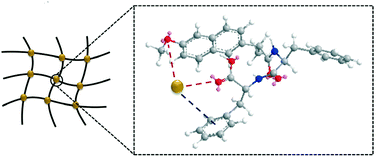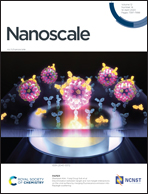Metal ions modulation of the self-assembly of short peptide conjugated nonsteroidal anti-inflammatory drugs (NSAIDs)†
Abstract
Metal ions are essential components that help maintain the processes of normal life, and they can be used to fabricate self-assembled building blocks for peptide derivatives, proteins and nucleic acids. Here, we have developed a novel strategy to construct supramolecular hydrogels modulated using metal cations. Upon introducing a variety of metal ions into aqueous solutions of a gelator (naproxen-FF), including a nonsteroidal anti-inflammatory drug (NSAID) and dipeptide, we obtain stable hydrogels under neutral or alkaline conditions. It is found that these hydrogels with three-dimensional nanofiber networks exhibit excellent mechanical properties and thixotropy, as well as superb responsivity to multiple metal ions. Due to the significance of potassium ions in biological processes, the K-triggered hydrogel has been chosen as a model, and its self-assembly mechanism has been explored via various spectral analysis processes. In addition, the self-assembly performances of peptides are significantly affected by the chemical structures of the gelator molecules. This work provides deep insight into the aggregation mechanism of dipeptide-conjugating drug molecules through introducing a variety of metal ions, laying the foundation for further biological applications.

- This article is part of the themed collection: Advisory Board research selection


 Please wait while we load your content...
Please wait while we load your content...